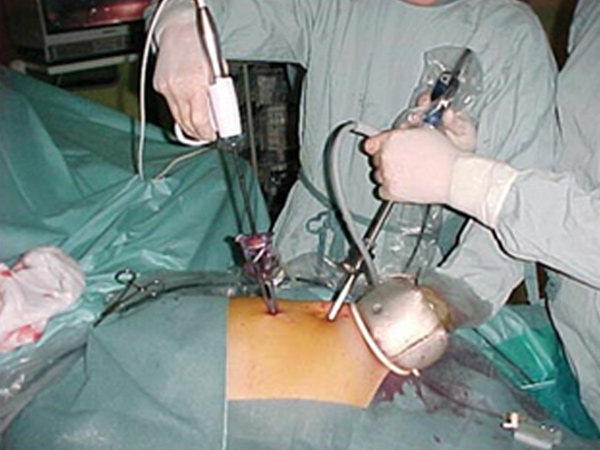Laparoscopy & Robotic Surgery
Laparoscopic surgery or as it is also known as Minimally Access Surgery or Key hole surgery or Bandaid surgery is a modern day technique to perform abdominal procedures through small incisions (0.5 to 1.5 cm) as compared to traditional long incisions needed in traditional surgical procedures.
Advantages of Laparoscopy over open procedure are-1) Reduced chances of haemorrhage and hence reduced need for blood transfusion.
2) Smaller incision resulting in reduced post operative pain , reduced recovery time and reduced scar size.
3) Reduced pain leads to reduced pain medication.
4) Faster recovery leads to less loss of work hour loss and hence less economic loss.
5) Reduced chances of post operative infection.
Laparoscopic surgery includes introduction of telescope inside the abdomen along with thin and long hand instrument to work inside while performing the procedure visualizing in the monitor.
Procedures commonly done laparoscopically are-1) Gall bladder stones-Laparoscopic Cholecystectomy
2) Appendicitis (acute/interval) - Laparoscopic Appendicectomy
3) Hernia(Inguinal/ incisional /umbilical) - Laparoscopic Hernia repair with mesh
In certain advanced laparoscopic procedures, such as colectomies (removal of part or whole colon), gastrectomies , splenectomies etc where a longer incision has to made at the end of the procedure to retrieve the specimen we like to perform HALS ( hand assisted laparoscopic surgery)where from the starting of the surgery a hand port with air tight sleeve for prevention of the leak of insufflated gas is introduced to perform the surgery. It has the advantage of controlling any untoward event during the surgery because the hand inside the abdomen can control it successfully. In addition the tactile sensation of the hand forgoes the limitation of laparoscopy especially in cancer surgery.


